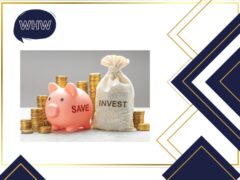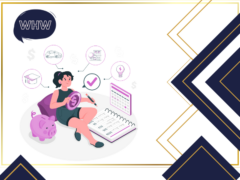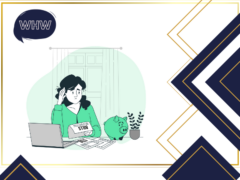How to get rid of debt faster and smarter: tips and techniques

Debt often feels like an unwelcome guest at your dinner table, lingering long after the meal is over. If you’re nodding in agreement, you’re certainly not alone in your quest to get rid of debt.
Every journey to financial clarity begins with a solid understanding of the options available, from budgeting to debt consolidation and credit card debt relief programs.
In this guide, we’ll gently walk through each of these options, showing you not just how to manage your debts, but how to strategically reduce them in a way that meshes with your life.
Here, it’s all about finding solutions that feel as though they were tailored just for you, so you can say goodbye to that unwelcome guest for good. Stick with us, and let’s start this transformative journey to becoming Debt Free with confidence and optimism.
Understanding debt
Debt arises when individuals or entities borrow money to cover expenses that exceed their current financial resources. It can accumulate from various sources including credit cards, student loans, mortgages, and auto loans.
Often, debt is incurred from necessary expenditures, such as education or home purchases, or from unanticipated financial strains like medical emergencies or unemployment.
Interest rates significantly impact the growth of debt. Higher rates compound debt quickly, increasing the total amount owed over time. Repayment terms also influence debt management, dictating how long borrowers have to repay and any penalties for early repayment.
These factors collectively determine the financial burden placed on the borrower, influencing their overall economic stability and ability to achieve a debt-free status. Understanding these elements is essential for anyone facing financial obligations.
Strategies to get rid of debt
Navigating the path to a debt free life involves adopting robust strategies that align with personal financial goals.
Whether you are utilising debt consolidation programs or personal management techniques, each method provides unique advantages:
- Avalanche method: This effective strategy involves paying off Debt with the highest interest rates first, typically found in credit card balances or high-interest loans. It’s an excellent approach for anyone looking to minimise the cumulative interest, thereby reducing their overall financial burden more efficiently.
- Snowball method: If you prefer seeing results quickly to stay motivated, the Snowball method focuses on clearing the smallest debts first, gradually working up to the larger ones. This technique can simplify your debt management process and provide early successes that propel you forward.
- Budget restructuring: A critical step in debt relief is to reevaluate and adjust your budget, allowing for greater allocations toward debt repayment. Cutting back on non-essential expenses or renegotiating existing financial commitments can free up funds that contribute significantly to debt reduction.
- Extra income allocation: Implementing this strategy involves directing any additional income—such as bonuses, tax returns, or side hustle earnings—directly towards your debt. This can be one of the best ways to pay credit card debt off, accelerating your journey to becoming debt-free.
- Debt consolidation: For those managing multiple sources of debt, debt consolidation can be an appealing option. It simplifies your financial commitments into one monthly payment, often at a reduced interest rate, making it easier to manage your finances and potentially decreasing the amount paid in interest over time.
By incorporating these personalised debt management strategies, you’re not just working towards clearing your debts; you’re enhancing your overall financial literacy and capability.
Choose the strategy that best fits your circumstances and start your journey to financial freedom today.
Debt relief options
While options like negotiating with creditors and enrolling in credit card debt relief pPrograms can certainly lighten your financial load, initially embracing broader financial management strategies like the mentioned above offers deeper, more lasting benefits.
These foundational techniques not only directly reduce your current debt but also help cultivate smart financial habits that guard against future debt accumulation.
Negotiating with creditors
Before heading to the negotiation table, it’s wise to leverage effective debt management strategies such as the avalanche or snowball methods.
These techniques prioritise paying off debts strategically—either by targeting the highest interest rates first or clearing the smallest balances quickly.
Establishing control over your debts in this way can strengthen your position and confidence, making negotiations on interest rates and repayment terms more successful.
Credit card debt relief program
These programs are great for streamlining your debt into one manageable payment at a lower interest rate. However, diving into them with a solid foundation of disciplined budgeting and debt reduction can enhance their effectiveness, helping you maintain long-term financial independence and stability.
By prioritising a proactive approach to managing your debts, you set yourself up not just for temporary relief, but for sustained financial health and freedom.
This methodical, step-by-step reduction of debt ensures you tackle your financial challenges head-on, minimising future risks and maximising stability.
Also read our articles: How to finance a car? and Can you refinance a personal loan?
Tools and resources for debt consolidation
Navigating the road to Debt Consolidation can be streamlined with the right tools and professional guidance. Embracing both digital aids and expert advice ensures you manage your debt efficiently and wisely.
Software and apps
In the digital age, numerous apps and software are designed to assist with financial planning and debt management.
Tools like Mint or YNAB you need a budget help you oversee your finances by tracking spending and categorising expenses, making it easier to see where you might cut back to free up more money for debt repayment.
For those focused on debt consolidation, apps like Unbury.Me offer calculators that simulate various payoff strategies, showing you the potential impacts of the Avalanche and Snowball methods on your debts.
These tools can be invaluable for setting realistic timelines and sticking to your debt reduction goals.
Professional help
While apps provide great data and organisational help, complex debt situations often benefit from the personalised touch of a financial advisor or credit counselling service.
Consider seeking professional help if your debt feels overwhelming despite your best efforts, or if you need specific advice on debt consolidation programs.
These professionals can offer tailored advice, negotiate with creditors on your behalf, and help you develop a comprehensive payment plan that respects your financial limits and life goals.
Leveraging these tools and resources empowers you to approach Debt Consolidation with confidence, equipped with a clear plan and the support needed to optimise your financial health.
Whether you’re utilising tech solutions to keep track of your progress or consulting with debt experts for strategic advice, you’re taking important steps toward financial freedom.
Living debt free: maintaining financial health
Achieving and maintaining a Debt Free lifestyle involves disciplined financial practices that not only eliminate current debts but also prevent future ones.
Here’s how you can solidify your financial health:
Effective budgeting
To live debt free, start with crafting a detailed budget. Itemise your income and expenses to understand where your money goes each month.
Use budgeting apps to categorise your spending and set limits for each category. This helps ensure you don’t spend more than you earn and allows you to allocate extra funds towards savings, debt repayment, or investments.
Regularly reviewing and adjusting your budget is key to staying on track.
Building an emergency fund
Establishing an emergency fund is crucial for absorbing unexpected financial shocks without slipping back into debt. Start by setting a small, achievable goal, such as $500, and gradually build this up to cover three to six months of living expenses.
This fund acts as a financial safety net for unforeseen expenses like medical emergencies or urgent home repairs.
Investing for the future
Once your emergency fund is established, consider investing to grow your wealth. Even modest investments in low-risk assets like bonds or index funds can yield returns over time, contributing to your financial security and independence.
By implementing these strategies, you not only work towards being debt free but also build a comprehensive approach to long-term financial health.
Effective budgeting, a solid emergency fund, and prudent investing are all integral to maintaining your financial stability and ensuring you are prepared for whatever the future holds.
Based on these tips, also read our articles on How to start investing? and How to increase your income?.
Related content

Saving or Investing: Which is the Best Option?

The U.S. Dollar A Journey Through Its History

How Financial Education Can Help Avoid Excessive Debt

What is Revolving Credit?

How to Set Financial Goals for the Future
